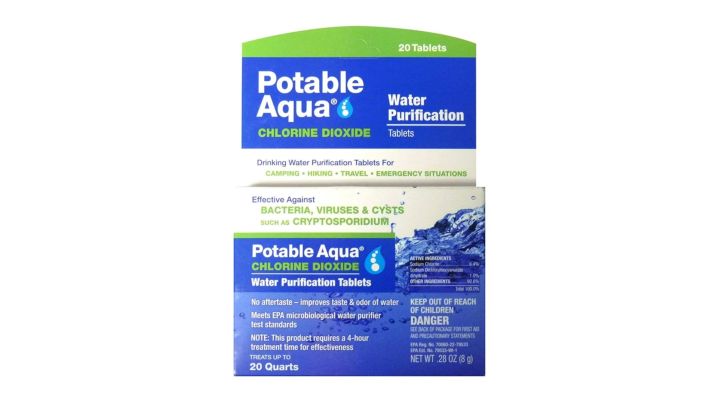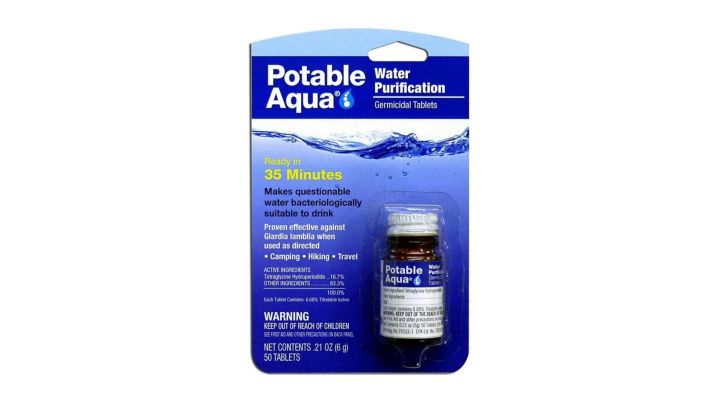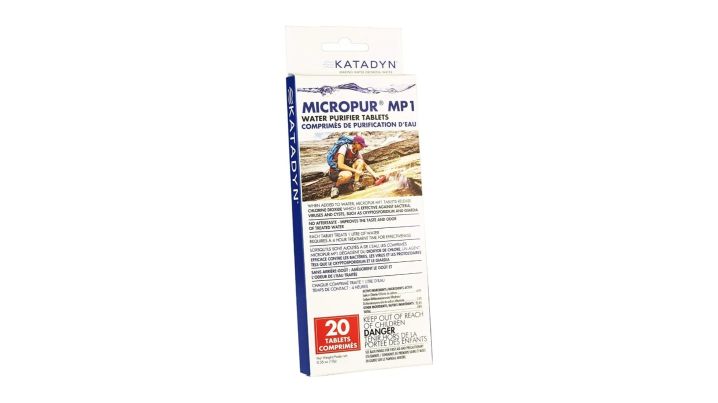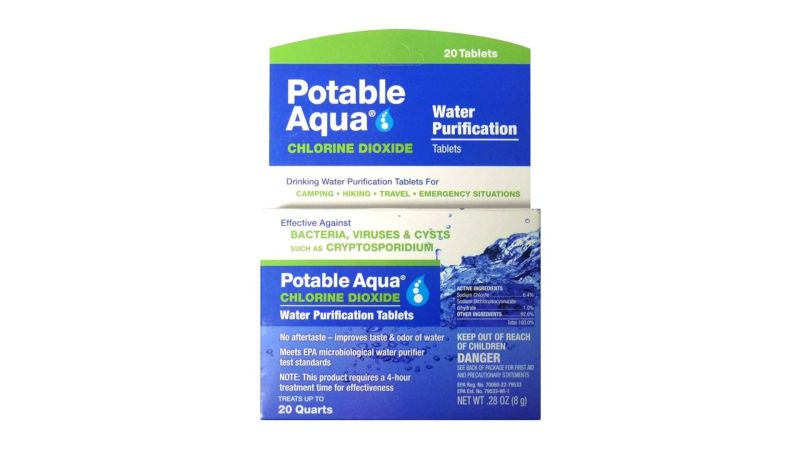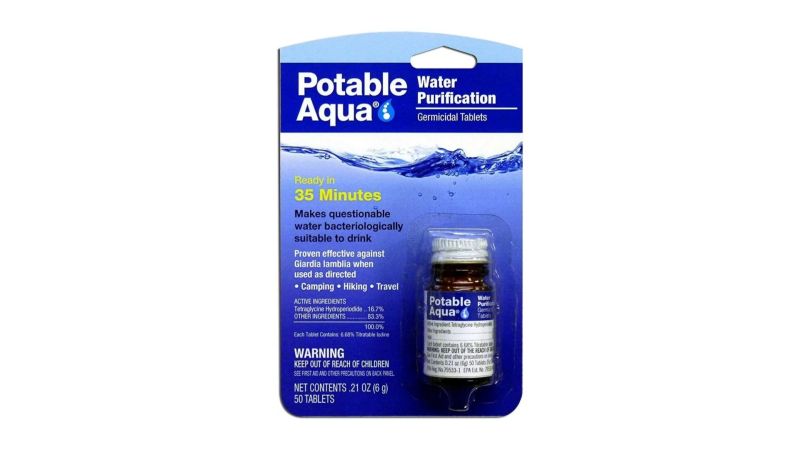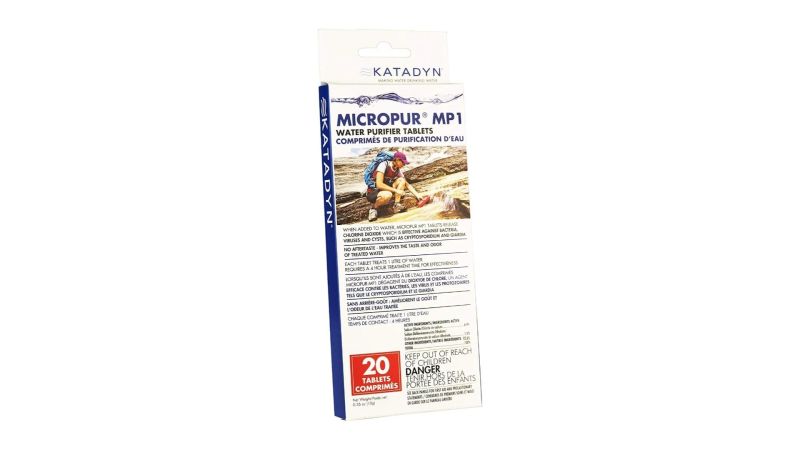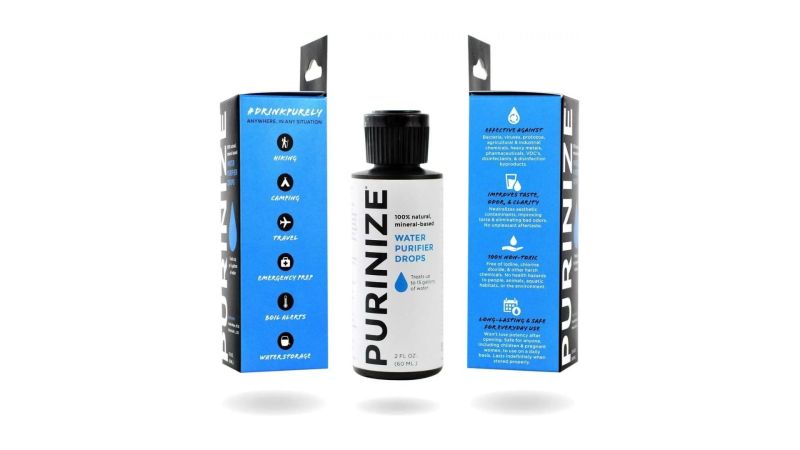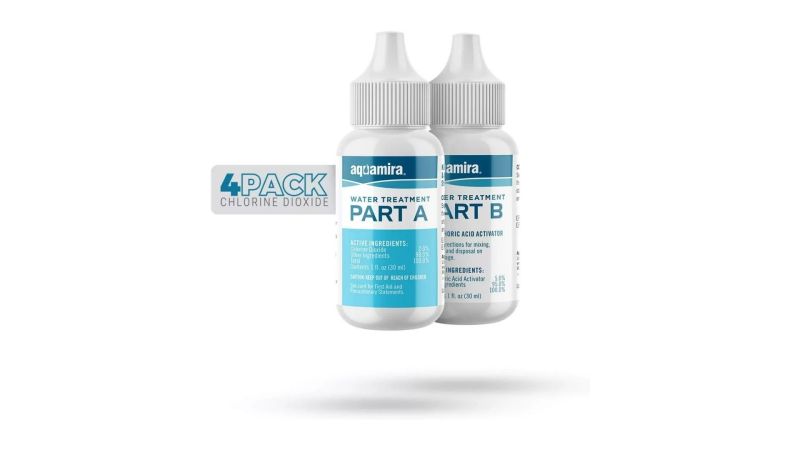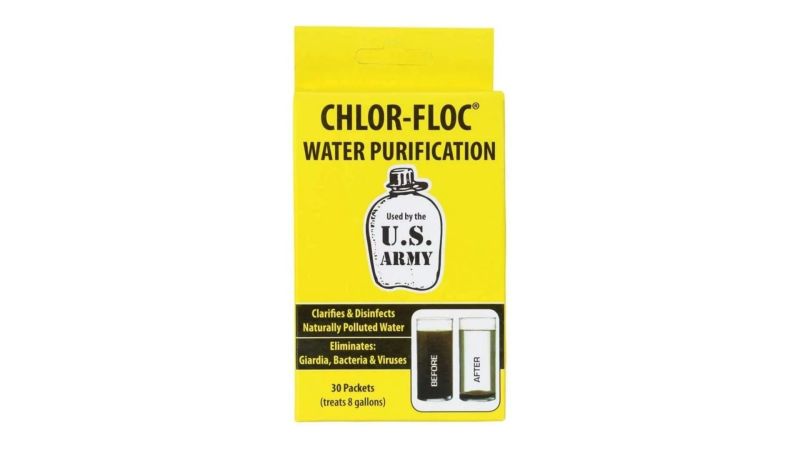We may earn revenue from the products available on this page and participate in affiliate programs.
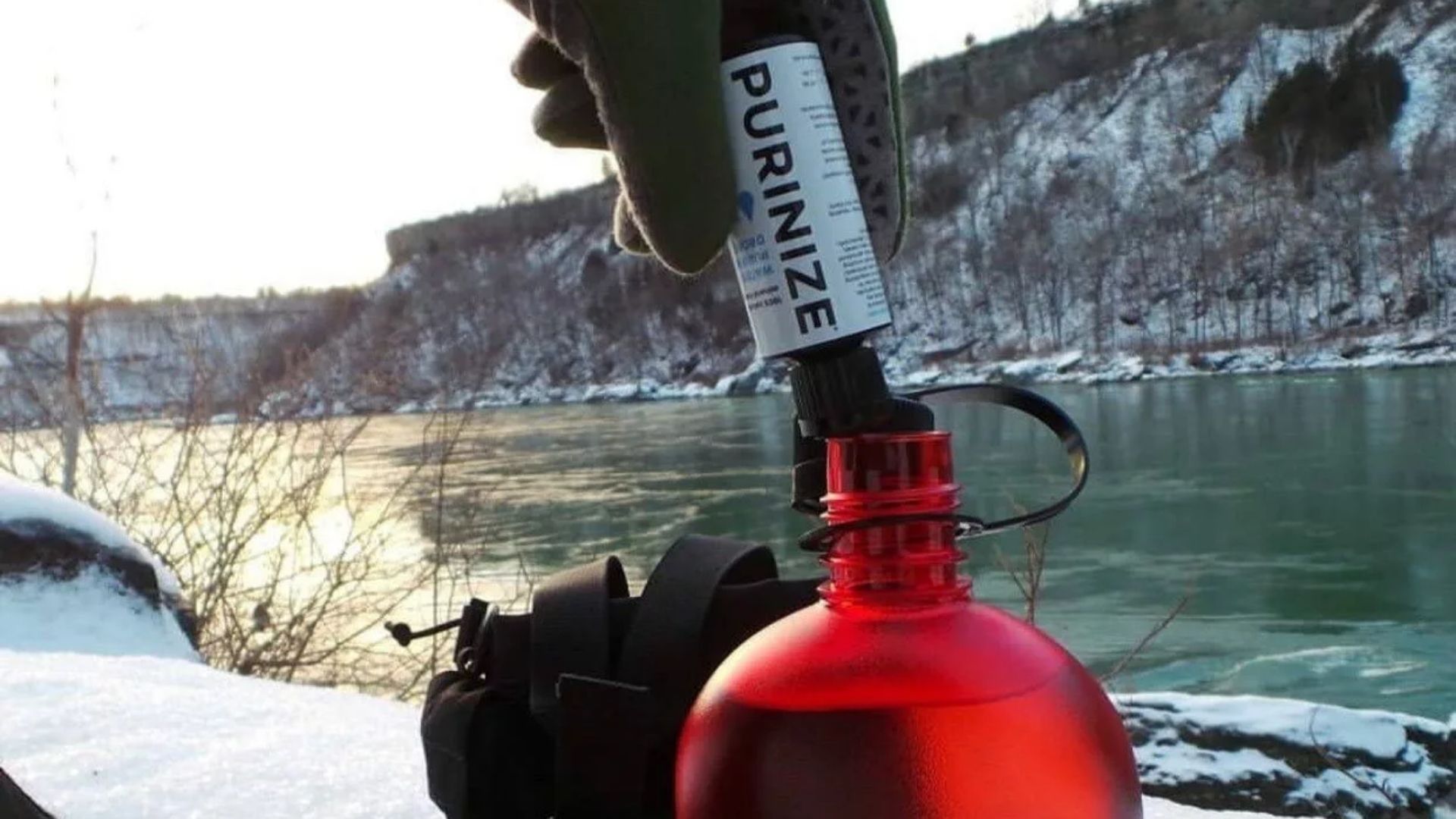
What’s faster? Light, lightning, or diarrhea? Answer: Diarrhea — because you run like lightning to the bathroom, turn on the light, and find the diarrhea beat you there. And while some people think it’s funny while it’s really brown and runny, getting a bad gut in the backcountry is no laughing matter. At best, it will make you miserable AF. At worst, you could die. So choosing water sources carefully is suuuuuuuuper important as is the method by which you purify your drinking water.
To save your ass from your own bad decisions, your trusty writers here at Task & Purpose have reviewed many of the commonly available water purification tablets (and droplets) for your water treatment use. We reviewed specs, read some science stuff about bacteria, viruses, and protozoa, checked a few government websites, drank copious amounts of coffee and later beer, asked the Magic 8 Ball a few questions, and then prepared to elucidate so the next time you play pull my finger in the woods, your butt won’t let out a zinger.
- Best Overall: Potable Aqua Chlorine Dioxide Tablets
- Best Value: Potable Aqua Iodine Tablets
- Honorable Mention: Katadyn Micropur MP1
- Best Natural: Purzine Water Purifier Drops
- Best Two-Part Drop Treatment: Aquamira Water Treatment
- Best for Murky Water: Rothco Chlor-Floc Water Purification
Methodology
I gotta be honest with you: water purification tablets aren’t my first choice when moving through the hills. I prefer mechanical means to filter my water — like the GravityWorks Platypus or Katadyn BeFree or the Sawyer Squeeze systems. Sure, they’re heavier to carry than a bottle of drops or tablets, and sometimes unnecessary, but in the 30 plus years I’ve been going to the backcountry, I haven’t gotten sick yet. And I’m not saying tablets aren’t as good. In many cases they’re better, but they too have their downsides. More on that later.
So, how did I choose products for this review? I went to people who love water purification tablets and asked for their opinions. I read countless reviews and also a bunch of scientific literature on their efficacy. Then I culled that list to the best ones based on a number of criteria. Essentially, I wanted to know several things: 1) Do they kill most of the creepy crawlies that will turn your guts into mud and ruin your day? 2) How long does it take them to work? 3) Do they make water taste ok or like ass afterwards? (You aren’t as likely to hydrate with water that repels you.) and 4) Are they simple to use?
Best Overall
Potable Aqua Chlorine Dioxide Tablets
Best Value
Potable Aqua Iodine Tablets
Honorable Mention
Katadyn Micropur MP1
Best Natural
Purzine Water Purifier Drops
Best Two-Part Drop Treatment
Aquamira Water Treatment
Best for Murky Water
Rothco Chlor-Floc Water Purification
What to consider when buying water purification tablets
Most water purification tablets come in three general categories: chlorine, chlorine dioxide, and iodine. All are effective in killing viruses and bacteria, but some, like chlorine and iodine, struggle when confronted with Cryptosporidium and Giardia which gets KO’d in the first round by chlorine dioxide.
Types of water purification tablets
Chlorine
These are old school tablets that are great for killing bacteria and viruses but are not effective against Cryptosporidium and have low effectiveness against Giardia — both of which are found in North America. They are sharper on the palate and leave your water with a noticeable yet bouncy swimming pool aftertaste.
Iodine
Iodine is another old-school and proven way to treat water. Like chlorine, it struggles against Crypto and is somewhat effective against Giardia. Iodine tablets leave your water looking orangish and are angular on the palate with a bright flavor of yuck and hints of gross and doctor’s office.
Chlorine dioxide
Think of these tablets as Chlorine 2.0. They’re highly effective against bacteria, viruses, and protozoa to include Crypto, and leave a faint swimming pool aftertaste more like your municipal water system — because it is used in some municipal water systems.
Key features of water purification tablets
Portability
Water purification tablets are the ultralightweight backpacker’s solution to water treatment. They’re super small, only weigh a few ounces, and can treat water on the go.
Speed
While tablets are lighter and smaller than water filtration systems, they are also slower — requiring about 15 to 30 minutes to kill bacteria and viruses and up to four to 24 hours to kill some protozoa. (With mechanical filtration, you can drink water immediately through the filter.) They take some planning to use on the move. #ProTip: Use two canteens when using tablets. Drink out of one that’s already been treated while the other is being treated and trade off.
Health
Waterborne illnesses can be super unpleasant at best, and fatal at worst. The further you are from the trailhead, the greater your risk, so don’t fuck around with water sources. You should treat (or filter) any water you get from wild sources. I use either a Platypus GravityWorks or Katadyn BeFree water filter in the backcountry and always take tablets as a backup system.
Cost
Water tablets (or drops) are way cheaper than water filtration systems in the short term. For the most expensive tablet system I could find, you can treat 30L of water for about $16. The cheapest filter I’d trust my life to is the Sawyer Min and that runs about $22 and lasts three to five years. So the cost of entry with tablets is cheaper, but for a few dollars more, you can get a mechanical filtration system that does everything tablets do but will last for years and leave your water tasting much better.
Pricing for water purification tablets
There isn’t a whole lot of variation in water tablet pricing. The cheapest I could find that I’d recommend were the iodine tablets at $8, and the most expensive tablets I could find were the Katadyn chlorine dioxide tablets at $17.
Tips and tricks
- When using tablets, because they take so long to work, use two canteens so you can drink treated water from the first canteen on the go while the second canteen is treating your water — then alternate.
- Pay attention to water temperature. Chemical treatments work faster in warm water than they do in cold water — almost twice as fast.
- Bring along a clean bandanna or coffee filters to help strain out the chunks from your water.
- Better yet, get your water from low turbidity sources if you can.
FAQs about water purification tablets
You’ve got questions, Task & Purpose has answers.
Q: How long do water purification tablets last?
A: They last until the expiration date, so check them. Most last a few years.
Q: What is the best chemical to purify water?
A: Hands down, it’s chlorine dioxide because it nukes viruses, bacteria, Giardia, and Cryptosporidium.
Q: Does boiling water remove chlorine?
A: Yes, if you boil it for 15 to 20 minutes.
